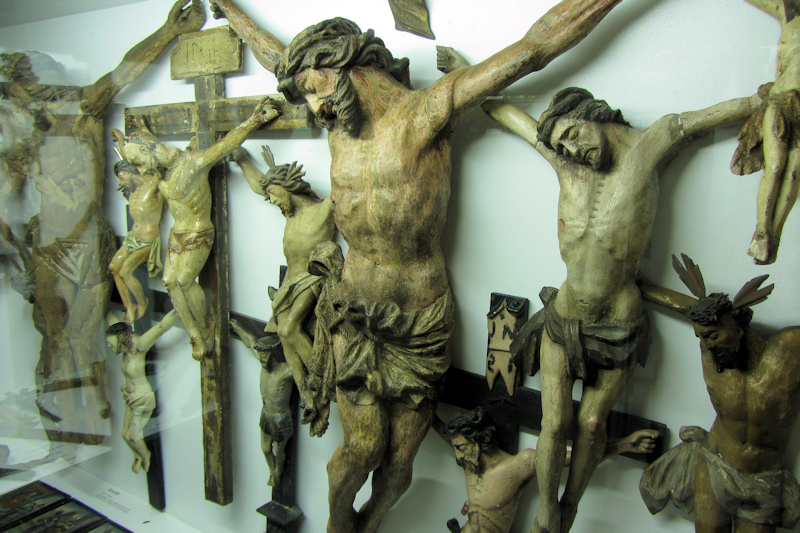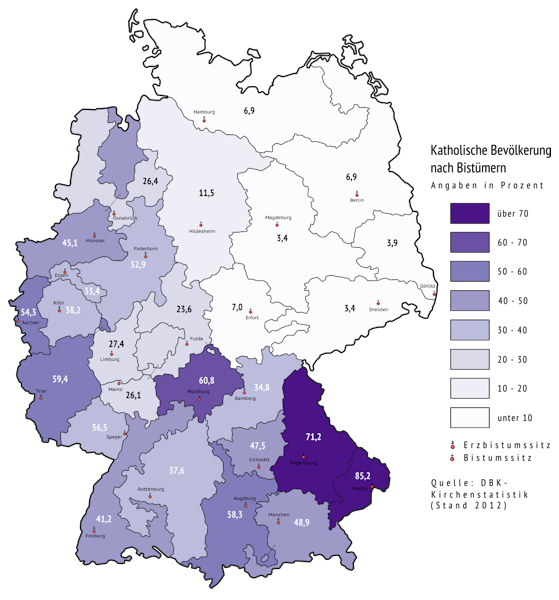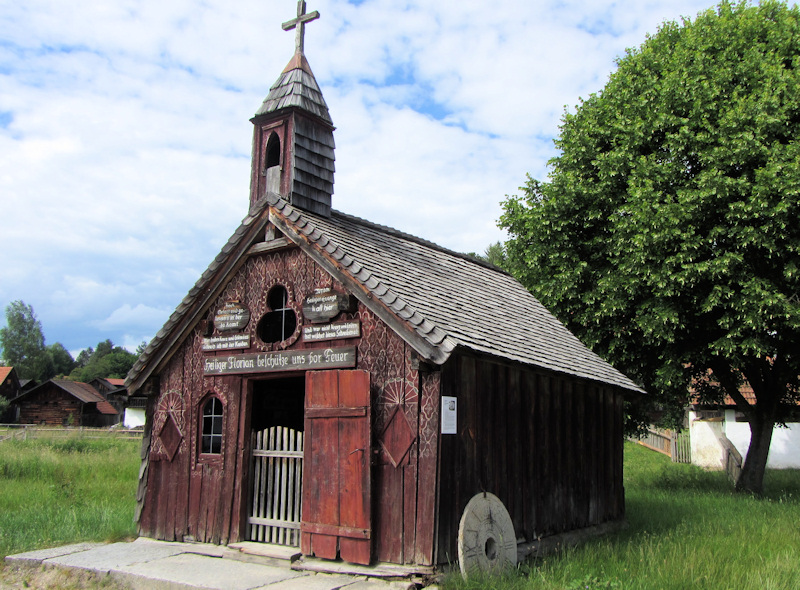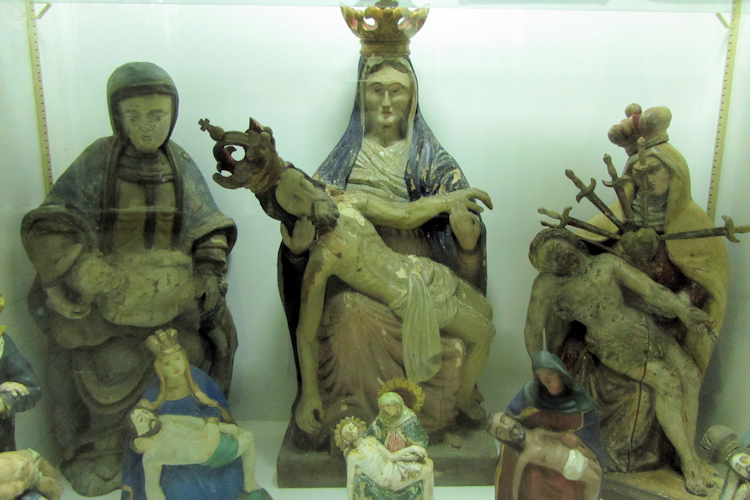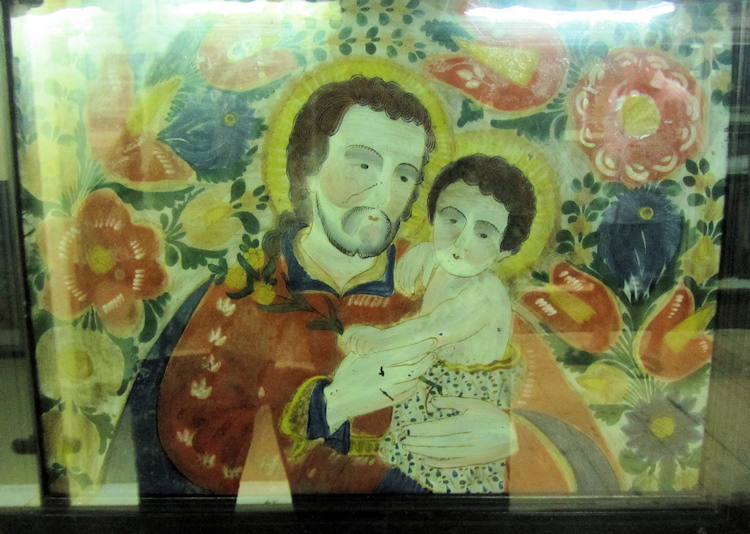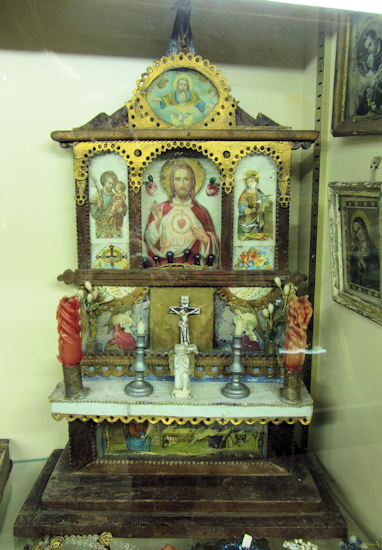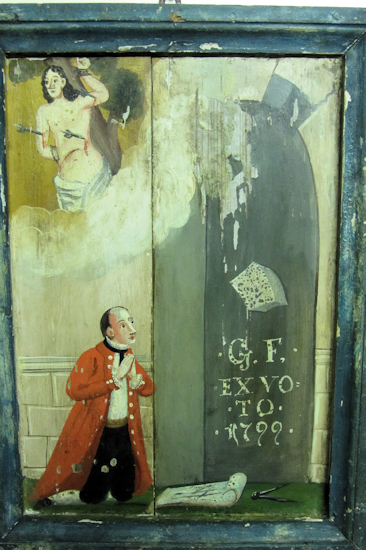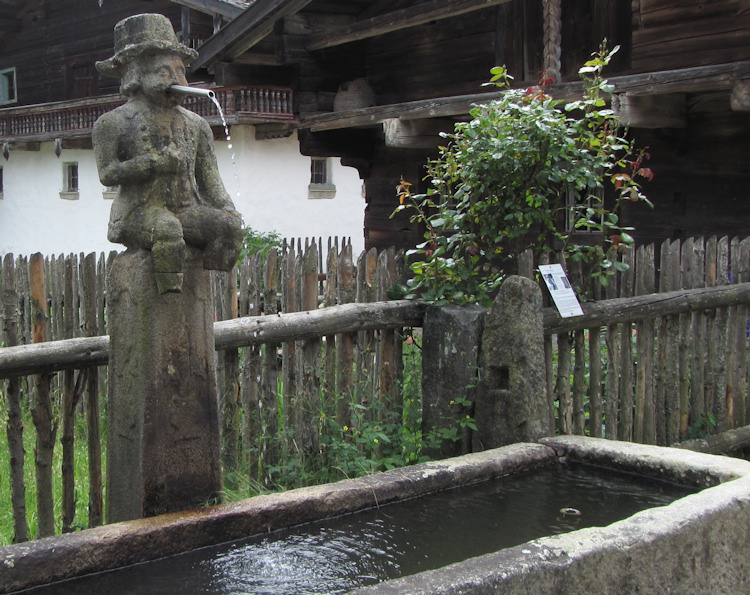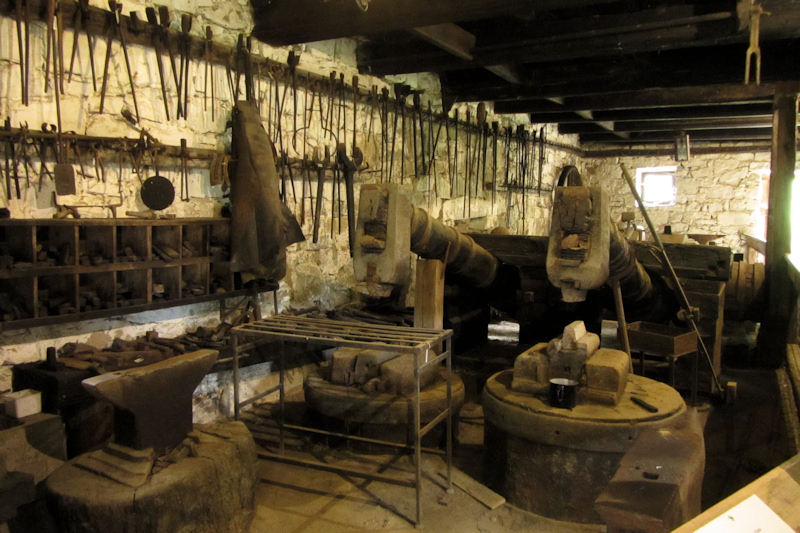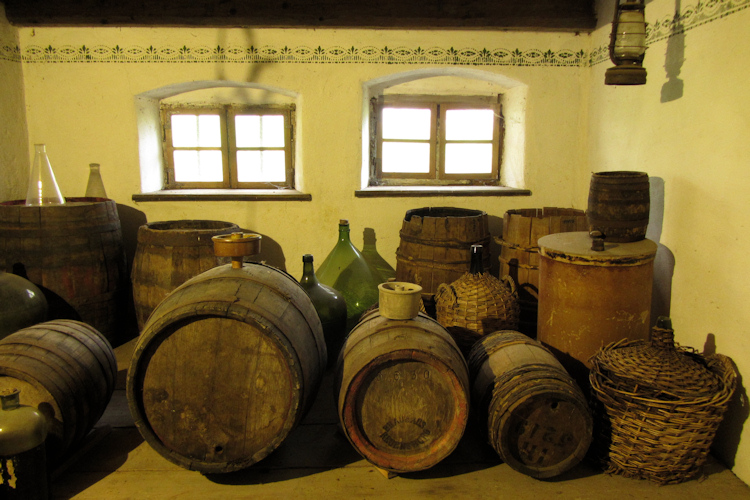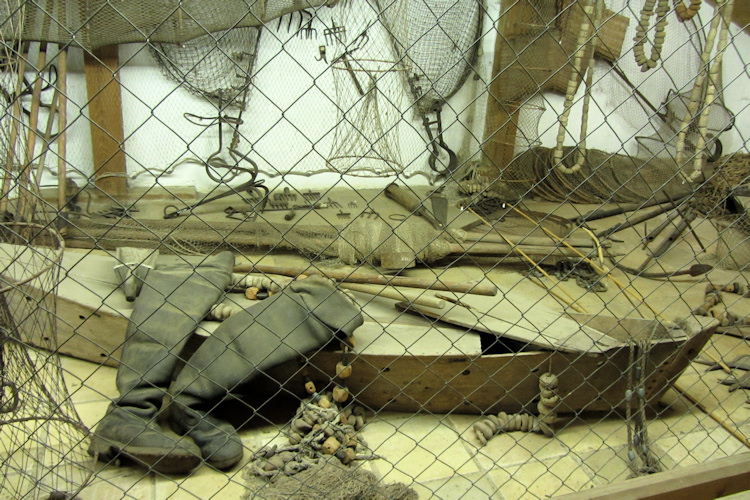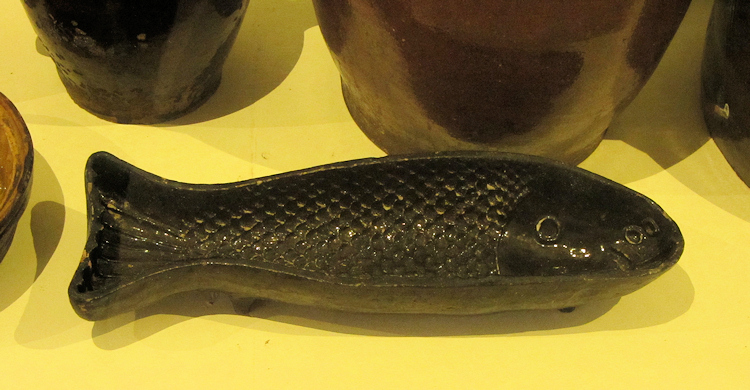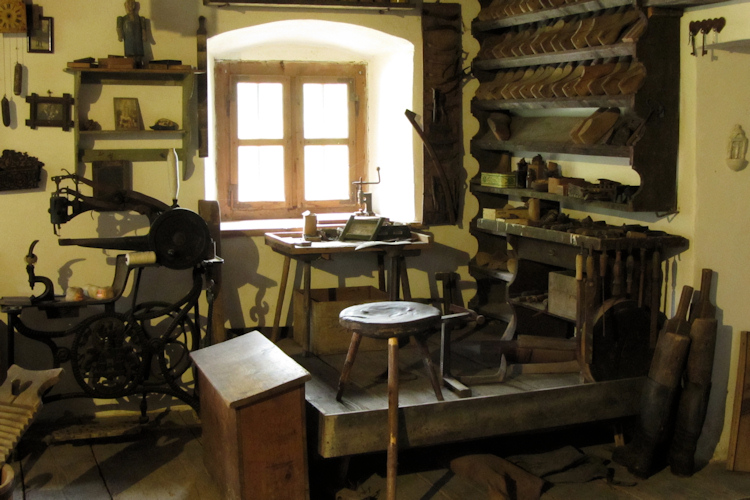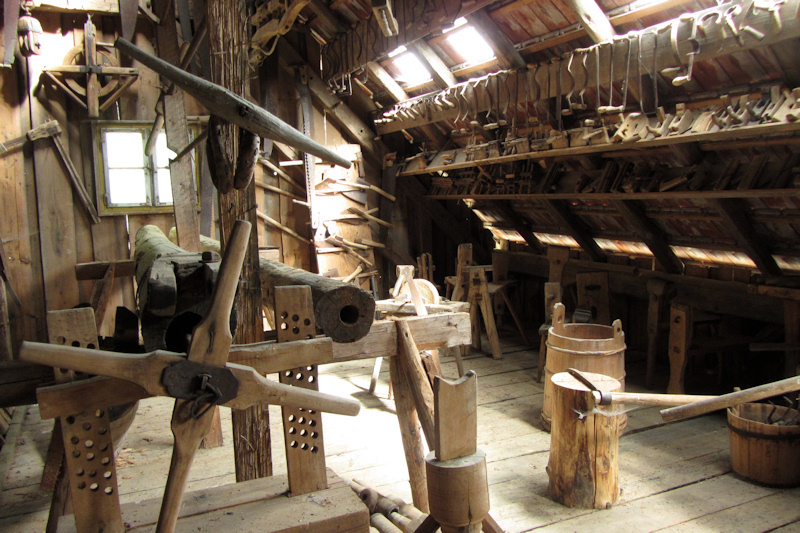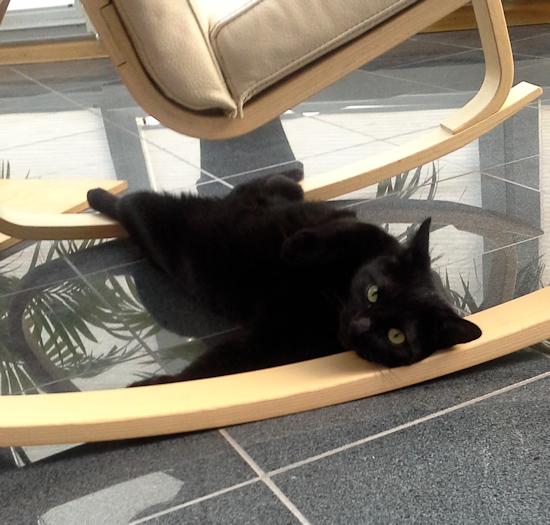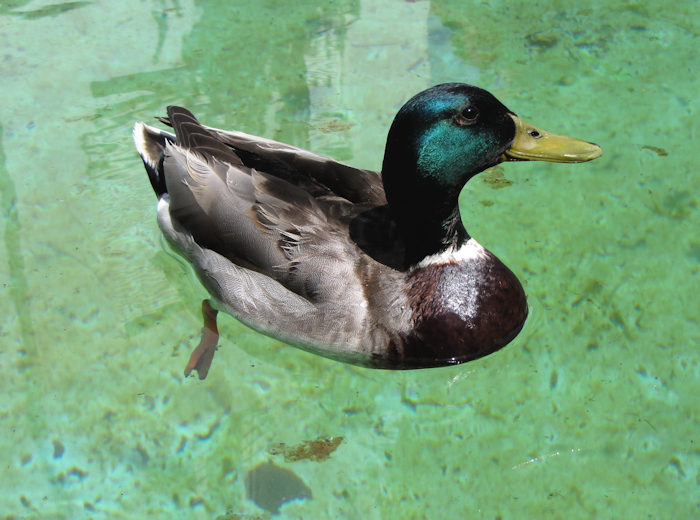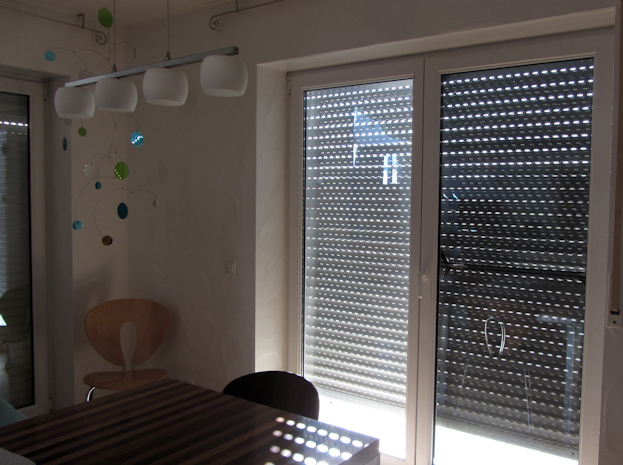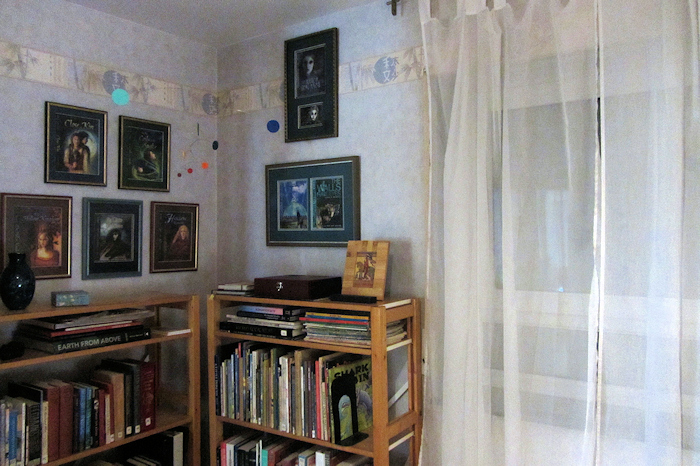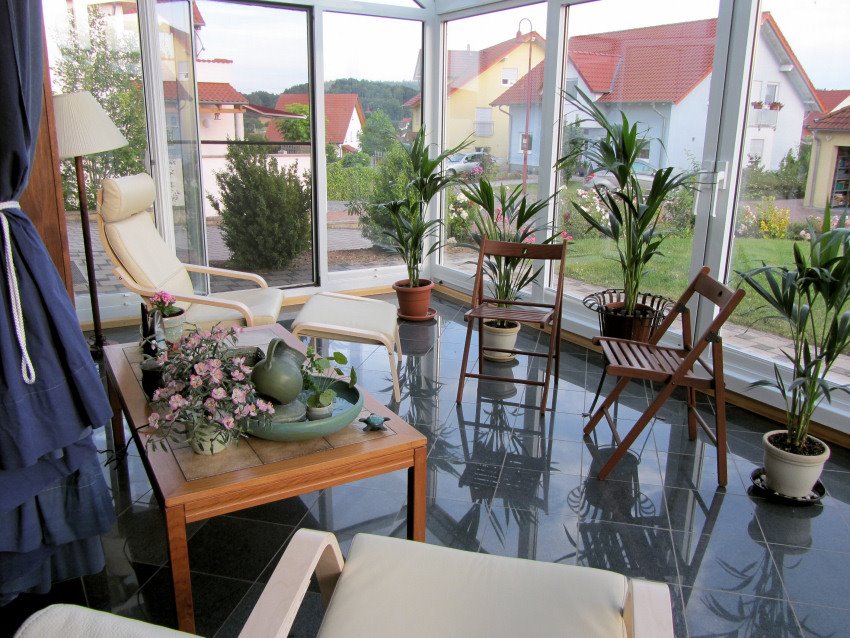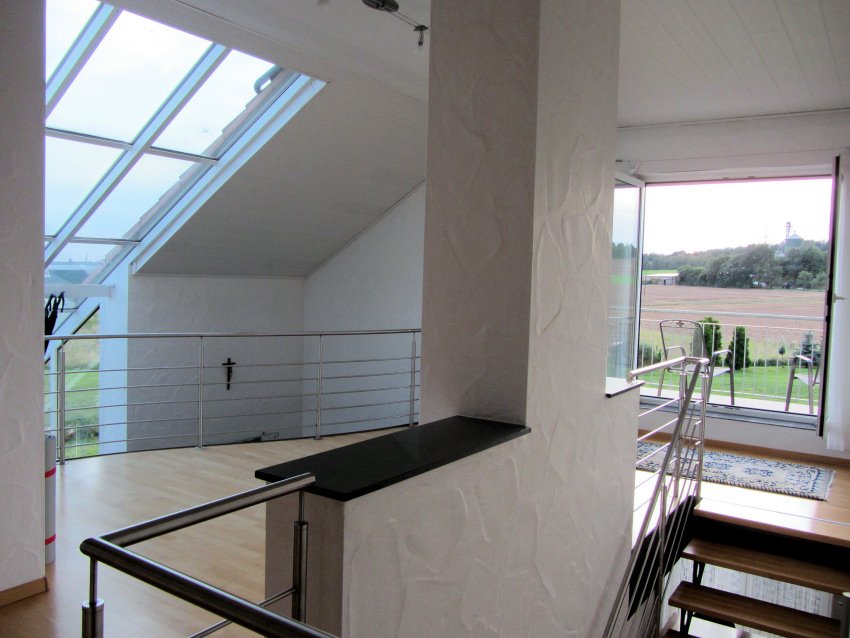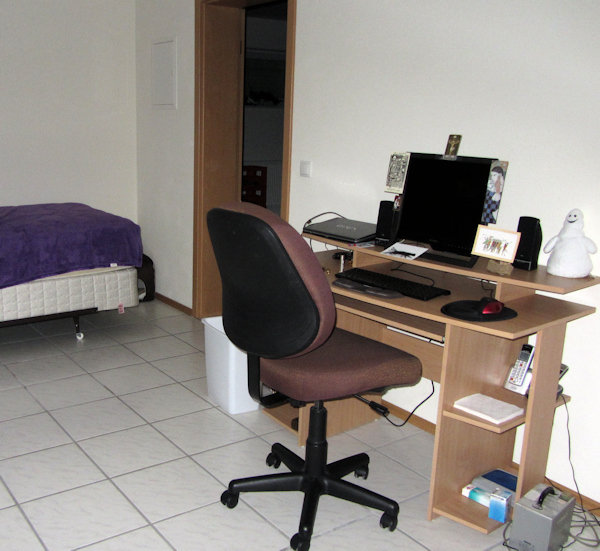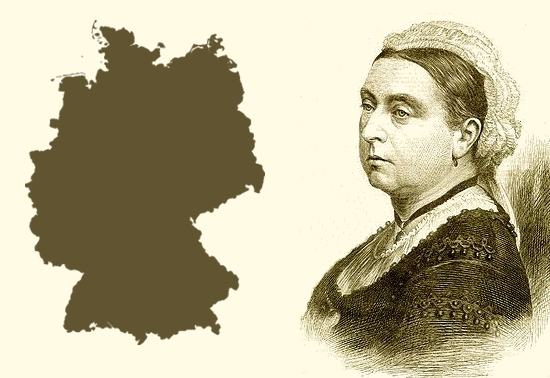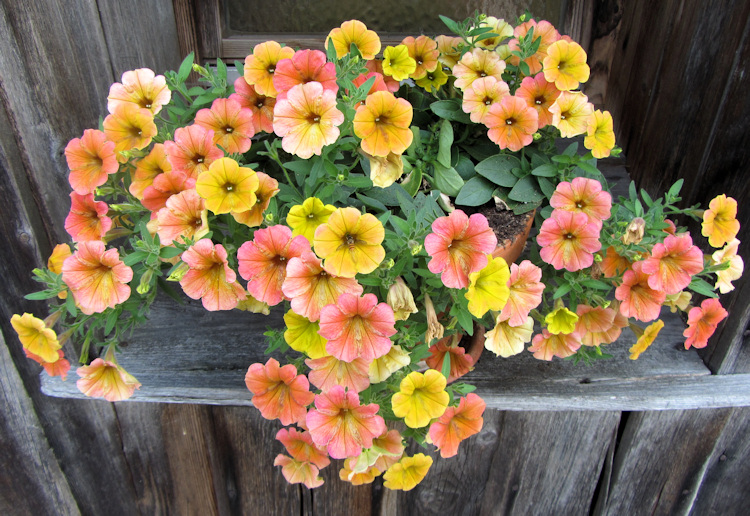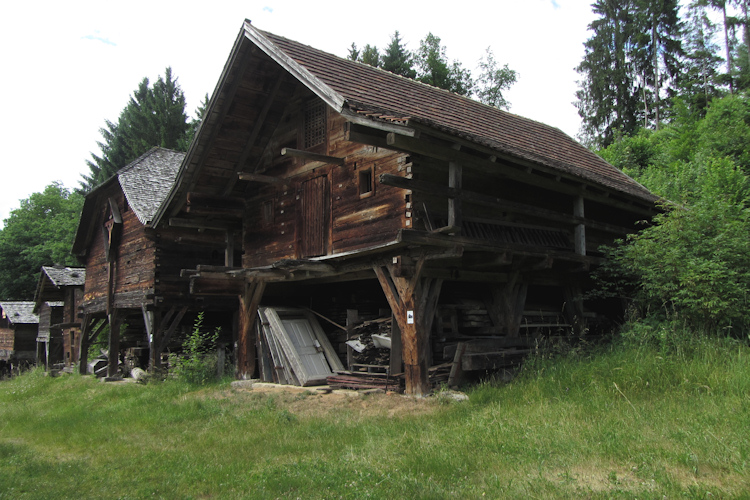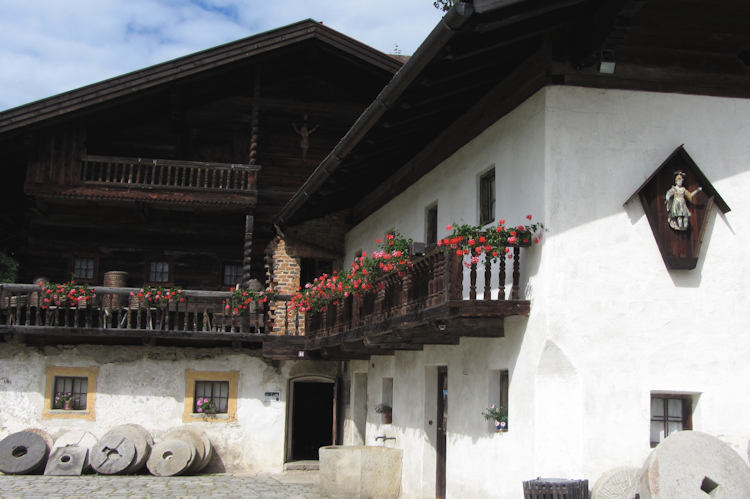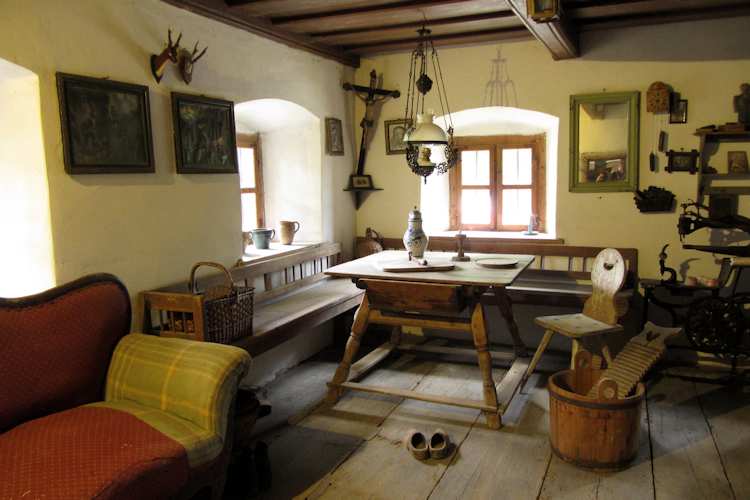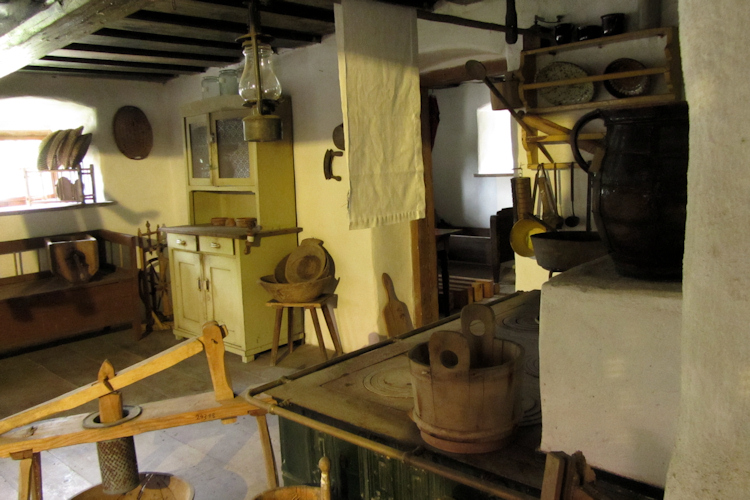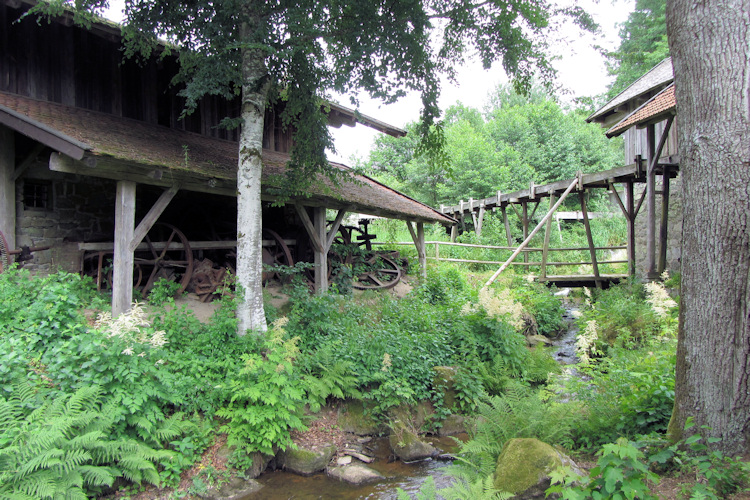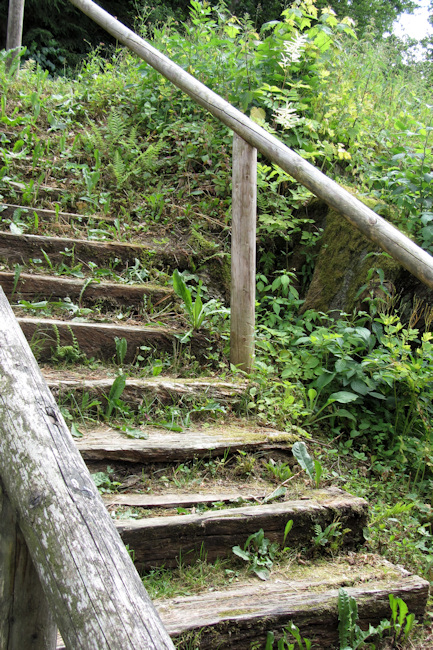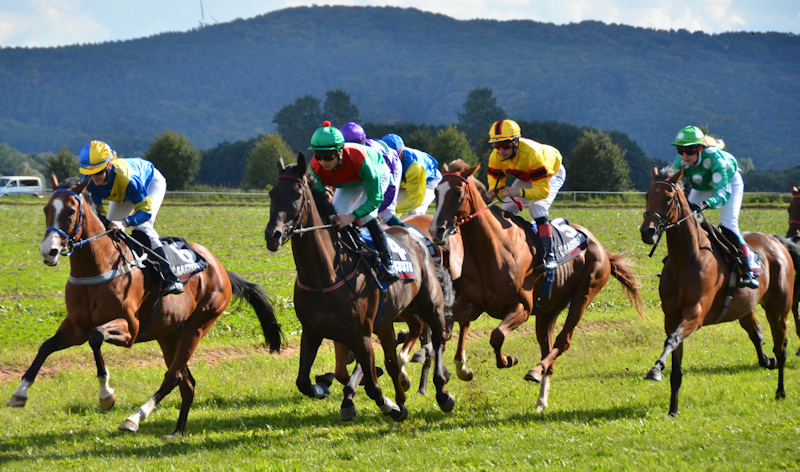
This weekend, Joe and I took a drive out to Miesau to see the 56th running of the horse races there. We weren’t entirely sure where the event would be held, but it proved easy to find. It’s just off L356, which is the priority road that goes from Ramstein to Spesbach, then Hütschenhausen, then Miesau. A couple of minutes outside Hütschenhausen, we could see cars parked along the road, and there was the race track on our left.
The idea of a horse race conjures up in my mind images of elaborate Ascot hats and stuffy old gentlemen drinking mint juleps, but this race was a relaxed family event. Vendors were serving coffee and cake, schwenk steaks, and other fest fare. There were plenty of places to sit down and enjoy a meal in the fresh air. A small grandstand held dignitaries, but most of the onlookers leaned against the rail or stood on banks next to the track. The crowd was full of children.
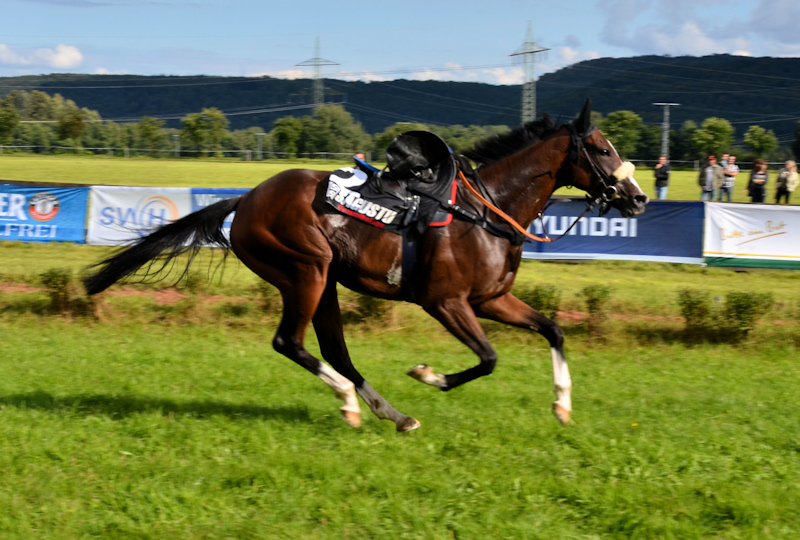
Riderless horse at the Miesau horse races (Pferderennen)
Although trotting and running races were both advertised, we didn’t arrive in time to see a trotting race. The race we saw was a traditional Thoroughbred race, and the horses were spirited and eager to run. One of them threw his rider going into the box and escaped to run the race alone. He gave it his all. He ran the track four times around by himself. Clearly, in his magnificent mind, he was winning.
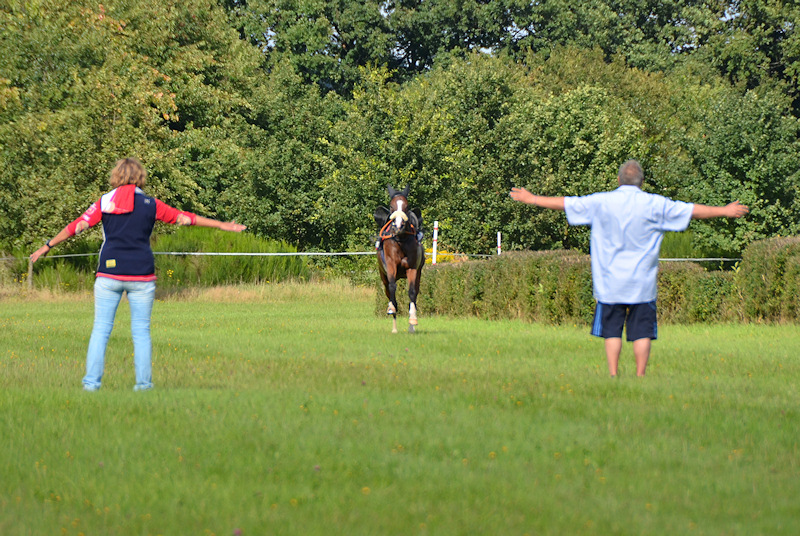
Spectators trying to stop a riderless horse at the Miesau horse races (Pferderennen)
A number of spectators had the idea that they should flag the horse down as he ran by, but that just inspired him to run faster. It all looked like an accident waiting to happen to me. Fortunately, the Red Cross was standing by with an ambulance.
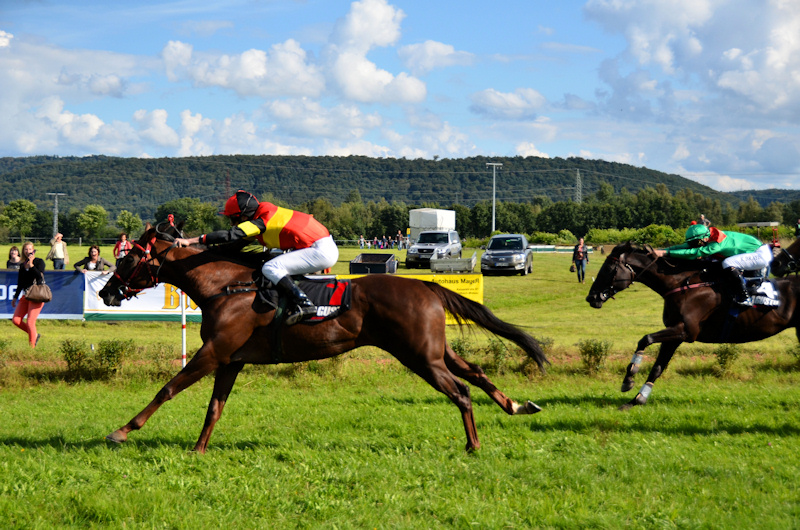
The winner at the finish at the Miesau horse races (Pferderennen)
Eventually, the riderless horse got tired and walked off with his owner, and the race got underway. It was a long race, one and a half lengths of the track, and the photo at the top of this blog post shows the field coming out of the first turn. This is the winner at the finish line. He beat out the favorite, who came in third, I think. We didn’t do any betting, but lots of other people did.
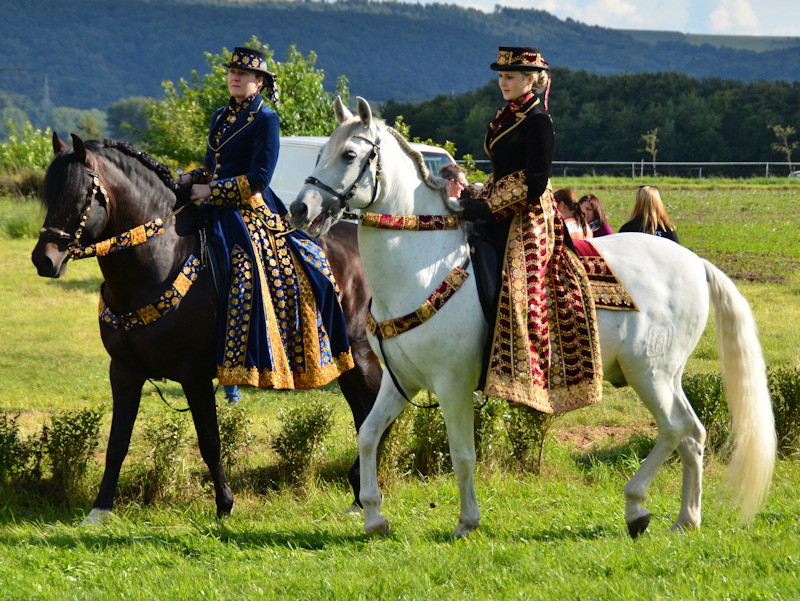
Escorting the winning horse at the Miesau horse races (Pferderennen)
Two gorgeous and gorgeously decorated horses were waiting to escort the winner to the grandstand to receive his prize. I think the dark horse was a Paso Fino.
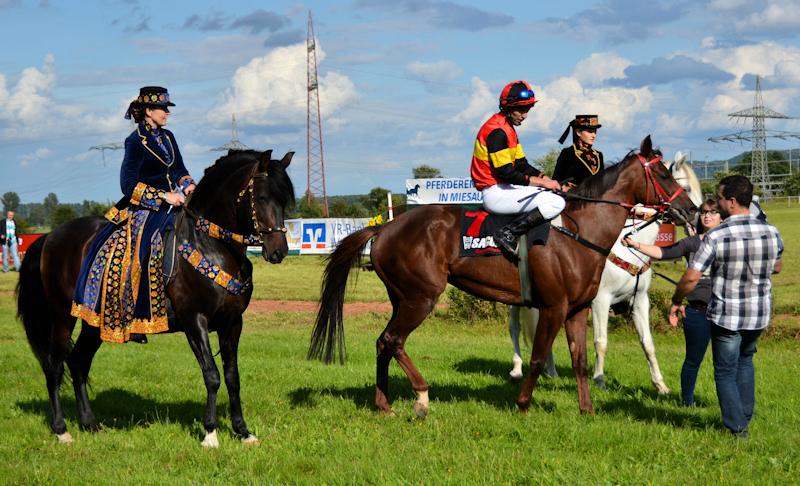
Posing for photos after winning at the Miesau horse races (Pferderennen)
And here they are with the winner.
Joe and I left feeling like winners too. We’ve been to many of the fests that pop up all over the region, but this was a pleasant change from what we’re used to. It was a wonderful excuse to get out into the open air, have a schwenk, watch beautiful animals, and participate in a local tradition. We’ll be back trackside next year.
To read my latest blog posts, please click on the “Green and Pleasant Land” logo at the top of this page. All photos taken in August, 2014, near Miesau, Germany. Photos and text copyright 2014 by Clare B. Dunkle.

